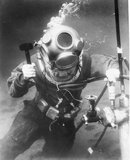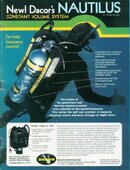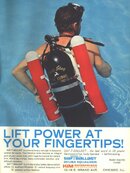One problem is the hydrostatic resistance appears to be constant, full or empty. Short of slogging through the patent, how does it work? I would expect to at least seeing images of your prototype on the Web site.
What is the total maximum displacement? What about using it on doubles or a single with a bailout/pony bottle?
What if I want buoyancy on the surface before descending on a long surface swim from the beach for example?
Is it a rigid container, as in internal and external pressure vessel? If so, what is the depth rating? If not, does a system of regulators and relief valves manage the differential pressure on the ballast tanks? If so, is it position sensitive? What is the patentable characteristic of the invention? All of the above is prior art, largely unpatented and used outside of the recreational Scuba market.
Where is it explained? I saw the patent but Im not about to dissect it.
What is the total maximum displacement? What about using it on doubles or a single with a bailout/pony bottle?
The device uses a bladder that does not inflate at all until about 3 atm pressure. It's pressure volume characteristic is such that it changes only about 3 lb in buoyancy from 96 feet to the surface .
What if I want buoyancy on the surface before descending on a long surface swim from the beach for example?
Thus, it is essentially rigid with constant volume...
Is it a rigid container, as in internal and external pressure vessel? If so, what is the depth rating? If not, does a system of regulators and relief valves manage the differential pressure on the ballast tanks? If so, is it position sensitive? What is the patentable characteristic of the invention? All of the above is prior art, largely unpatented and used outside of the recreational Scuba market.
You may find it interesting to look at our web site Home where the technology is explained
Where is it explained? I saw the patent but Im not about to dissect it.







